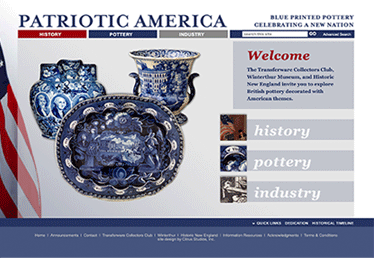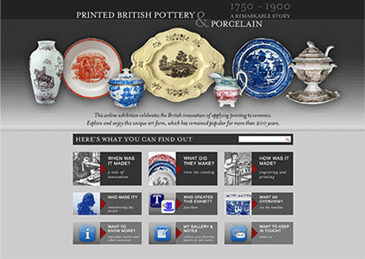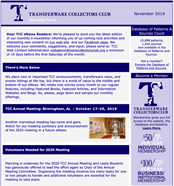


Number Five of an Ongoing Series by Dick Henrywood
My previous outing for this regular feature concentrated on William Hackwood’s “Arabian Sketches” series and I am pleased to report that it has produced information on one completely new scene. This is titled “The Rendezvous” and appears on a small platter length 11.5in. The example reported was in a plum colour which emphasizes the difficulty in describing the various shades of red and purple. I am tempted to bracket red and pink together but to treat all the others as shades of purple. This includes purple itself but also the lighter shades of lavender, mauve or lilac and the darker reds which are variously called plum, puce, magenta and even sometimes mulberry. Any other suggestions as to how to record these colour variations would be welcome.
For this fifth installment I am taking a break from the various series of named scenes to concentrate on a well-known trade name.
Various romantic-style patterns dating from the 1830s and 1840s are found with a printed mark in the form of a beehive with a pattern title above and the trade name “FLORENTINE CHINA” on a ribbon beneath. These wares have often been attributed to Samuel Alcock & Co. and eight pattern titles were listed in The Dictionary of Blue & White Printed Pottery (Volume 2, 1989). It turns out that there is documentary evidence to support the Alcock attribution and one recent find adds further proof with an example of the mark on a plate which also bears another printed mark for Alcock.
The various patterns can be found on dinner and tea wares in all the usual colours of the romantic period including black, blue, brown, green, purple and red. One example has been noted with an additional retailer’s mark for Higginbotham, Thomas & Co. of Dublin.
I have managed to assemble the following list of ten pattern names to date (see images at end of this article):
“Abbeville”
Illustrations: Williams 2/70 (plate)
“Blenheim”
Illustrations: Snyder 35 and Williams 1/200 (all plates)
“Forest”
Illustrations: Williams 1/630 (cup plate); Williams 2/662 (saucer)
“Gem”
Illustrations: None known
“Manilla”
Illustrations: Williams 1/391 (soup plate and cup plate)
“Maryland”
Illustrations: Snyder 35 (plate and mark); Williams 1/330 (plate); Williams 2/602 (mark)
“Neptune”
Illustrations: None known
“Pearl”
Illustrations: Snyder 36-37 (plate, platter and mark); Williams 1/367 (plate and cup plate); Williams 2/618 (plate and mark)
“Royal Star”
Illustrations: Williams 1/666 (plate)
“Toronto”
Illustrations: Williams 1/674 (saucer)
I have confirmed all ten of these titles but I feel sure there will be some others. As far as I can tell, only “Manilla” appears in the TCC database so far. Can anyone out there provide any other images or information?
All contributions would be gratefully received and will be reported in future Bulletins. They should be sent to Dick Henrywood by e-mail: henrywoodshighlights@transferwarecollectorsclub.org.
Rich with content for ceramic collectors, researchers, authors, curators, and historic archaeologists, the sites are sure to deliver value for their visitors. The exhibition’s curators continue to enhance them and, now, with site application upgrades, including a new magnification feature and upgraded content management capabilities, the TCC and its collaborators are pleased to relaunch these exhibits, all free to a worldwide audience.

Branded Patriotic America, debuted in 2014 in collaboration with Historic New England, and the Winterthur Museum

Launched in 2015 in partnership with the Northern Ceramic Society.
 Not a member but want to receive email updates?
Not a member but want to receive email updates?